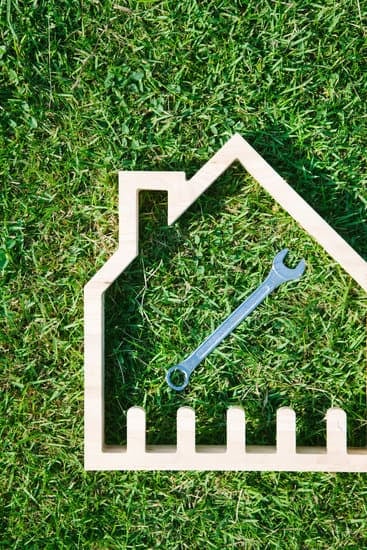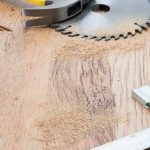Reflexes play a crucial role in the world of combat and fighting. Whether you are an aspiring martial artist, a self-defense enthusiast, or simply interested in improving your reaction time, having quick and precise reflexes can give you a significant advantage in any physical altercation. In this article, we will explore how you can improve your reflexes for fighting from the comfort of your own home.
The ability to react swiftly is essential in any type of combat situation. Quick reflexes allow fighters to effectively evade attacks and strike back with precision. By honing your reflexes, you not only improve your defensive capabilities but also enhance your offensive skills. Having sharp reflexes can mean the difference between delivering a targeted strike and missing an opportunity altogether.
In order to understand how to improve our reflexes, it is important to delve into the science behind them. The nervous system plays a critical role in our body’s ability to respond rapidly to external stimuli. By gaining insight into how our nervous system works in relation to our reflexes, we can better understand how to train and strengthen them effectively.
Understanding the Science Behind Reflexes
The human body’s ability to react quickly and instinctively is essential in any fight, whether it be for self-defense or professional martial arts. Reflexes play a crucial role in this process, allowing fighters to respond rapidly to unexpected situations and threats. To improve reflexes effectively, it is essential to understand the science behind them and how they are controlled by the nervous system.
How Reflexes Work
Reflexes are rapid, involuntary responses to specific stimuli. The reflex arc consists of five components: sensory receptor, sensory neuron, control center (interneuron), motor neuron, and effector muscle. When a stimulus is detected by a sensory receptor (such as touch or pain), it sends an electrical signal through the sensory neuron to the control center in the spinal cord or brain.
The control center then processes the information and sends a message back through the motor neuron towards effectors (muscles) that produce a response. This quick process bypasses conscious thought, enabling instantaneous reactions.
The Role of the Nervous System
The nervous system plays a vital role in controlling reflex actions. It is composed of two parts: central nervous system (CNS) and peripheral nervous system (PNS). The CNS includes the brain and spinal cord, while the PNS consists of all other nerves throughout the body.
When a stimulus occurs, messages travel from various receptors via sensory neurons towards either the spinal cord or brain for interpretation. Depending on the type and severity of stimuli detected, appropriate responses are generated through motor neurons.
To enhance reflexes effectively, it is important to understand key factors that influence their performance:
- Sensory Input: Improving your ability to detect subtle changes in your environment can enhance your reflexive responses.
- Neural Processing: Enhancing neural pathways involved in reflex actions can improve the speed and accuracy of reactions.
- Motor Output: Strengthening muscles involved in reflexive movements can allow for faster and more powerful responses.
By understanding how reflexes work and the role of the nervous system in controlling them, fighters can tailor their training to target specific areas for improvement. This knowledge serves as a foundation for developing effective exercises and techniques to enhance reflexes both at home and in martial arts training.
Building a Strong Foundation
Having strong reflexes is essential for fighters to react quickly and effectively during combat. In order to improve reflexes, it is crucial to focus on building a strong foundation through specific exercises. These exercises are designed to enhance the connections between the brain and the muscles, allowing for faster reaction times.
One important exercise for reflex improvement is the speed bag drill. This drill involves hitting a small bag with your fists in a rhythmic pattern. The constant movement of the bag challenges your reflexes, forcing you to react quickly and accurately. Incorporating this drill into your training routine can greatly improve hand-eye coordination and overall reflexes.
Another exercise that can help build a strong foundation is ladder drills. These drills involve quick footwork and agility movements using an agility ladder or cones. By practicing different patterns, such as lateral movements or high knees, you can improve your reaction time and coordination. Additionally, ladder drills help develop muscle memory, which aids in reflex improvement as well.
Jump rope exercises are also beneficial for improving reflexes. Jumping rope not only improves cardiovascular endurance but also enhances coordination and footwork. The quick movements required in jump rope exercises engage the central nervous system, leading to improved reaction times.
Incorporating these essential exercises into your training routine will undoubtedly contribute to improving your reflexes for fighting at home.
| Exercise | Description |
|---|---|
| Speed Bag Drill | Hitting a small bag with fists in a rhythmic pattern to enhance hand-eye coordination and overall reflexes. |
| Ladder Drills | Using an agility ladder or cones for quick footwork and agility movements in different patterns. |
| Jump Rope Exercises | Engaging in quick movements while jumping rope to improve cardiovascular endurance, coordination, and footwork. |
Mastering Hand-Eye Coordination
Hand-eye coordination is a crucial skill when it comes to improving reflexes for fighting. It is the ability to track and coordinate the movement of your hands with what you see, allowing for quick and accurate reactions. By practicing specific techniques, you can enhance your reaction time and develop faster reflexes.
One effective technique to improve hand-eye coordination is using target-based exercises. Set up targets such as small objects or markings on a wall, and practice hitting or touching them quickly and accurately. This can be done with punches, kicks, or even throwing objects like balls. Start with slower movements and gradually increase the speed as you feel more comfortable.
Another useful technique is hand-eye coordination drills using a partner or a training tool. These drills involve someone rapidly moving an object towards you while you have to react quickly to block, evade, or counter their movement. A common example in martial arts is having a partner swing a foam stick towards your head while you practice dodging or blocking it with swift movements.
Additionally, using equipment such as speed bags or focus pads can help improve both hand-eye coordination and reaction time. Speed bags require precise timing and accuracy to hit consistently, developing your ability to follow moving targets closely. Focus pads allow you to simulate real fighting scenarios by having a partner call out different strikes that you need to react swiftly to.
By incorporating these techniques into your training routine at home, you can master hand-eye coordination and enhance your reaction time effectively. Remember to start slowly and gradually increase the intensity as you progress. Developing this skill will not only improve your reflexes for fighting but also contribute to overall physical coordination in everyday activities.
Reacting Faster
In the world of fighting, having fast reflexes can be a game-changer. It allows you to react quickly to your opponent’s movements, giving you an advantage in combat. However, reflex speed is not something that comes naturally to everyone. The good news is that there are strategies you can employ to increase your reflex speed and improve your fighting skills.
One effective strategy for increasing reflex speed is by incorporating reaction training drills into your routine. Reaction training drills involve reacting quickly to a stimulus, such as a sound or a visual cue. This type of training helps enhance the connections between your brain and muscles, allowing you to respond faster in real-time combat situations.
Another strategy to consider is practicing hand-eye coordination exercises. Hand-eye coordination plays a crucial role in reacting quickly and accurately during fights. Some effective exercises include hitting a speed bag or participating in activities like boxing or MMA sparring. These exercises require precision and quick reaction time, helping you develop faster reflexes over time.
Furthermore, another useful technique for increasing reflex speed is using interval training methods. Interval training involves alternating between high-intensity bursts of activity and short periods of rest or lower intensity activity. This style of training improves both aerobic and anaerobic fitness levels while also building muscle memory and enhancing reaction time.
It’s important to note that simply performing these strategies alone will not guarantee instant results. Like any skill, developing faster reflexes takes time, dedication, and consistent practice. Patience is key when working on improving your reflexes for fighting at home.
Incorporating these strategies into your training routine will help you gradually improve your reaction time and increase your chances of success in combat situations. Remember to start slow and gradually increase the difficulty as you progress in order to challenge yourself appropriately.
| Strategy | Benefits |
|---|---|
| Reaction training drills | Enhances connections between brain and muscles, improves real-time response |
| Hand-eye coordination exercises | Develops precision and quick reaction time |
| Interval training methods | Improves aerobic and anaerobic fitness, builds muscle memory and enhances reaction time |
The Power of Visualization
Reflexes are not solely dependent on physical abilities, but also on mental prowess. The power of visualization is an incredibly effective tool that can help sharpen reflexes for fighting. By incorporating mental exercises into your training routine, you can enhance your reaction time and overall performance in combat situations.
Understanding the Link Between Visualization and Reflexes
Visualization involves creating a mental image or scenario in your mind and immersing yourself in it as if it were real. When applied to enhancing reflexes, visualization helps to strengthen the neural connections between your brain and body, allowing for quicker response times. By imagining different fighting scenarios and visualizing yourself reacting swiftly and accurately, you are training your brain to send faster signals to your muscles and anticipate movements more effectively.
Techniques for Effective Visualization
To harness the power of visualization effectively, it is crucial to practice certain techniques:
- Clear Mind: Find a quiet space where you can focus without distractions. Take a few deep breaths to clear your mind before starting the visualization exercise.
- Vivid Imagery: Imagine yourself engaged in a fight situation, whether it’s sparring with a partner or defending against an opponent’s attack. Create detailed mental images that involve all your senses – sight, sound, touch, smell, and even taste.
- Emotionally Engage: Experience the adrenaline rush and feelings associated with being in a fight while visualizing yourself skillfully dodging strikes or counterattacking swiftly.
- Repetition: Incorporate visualization exercises into your regular training routine consistently for optimal results.
Incorporating Visualization into Training
To maximize the benefits of visualization for reflex improvement during fighting at home, consider integrating it with other physical exercises:
- Shadow Boxing: While shadow boxing, envision an opponent throwing various strikes at you. Visualize deflecting each strike with precision and launching counterattacks.
- Reaction Drills: Use visualization techniques to imagine an opponent launching unpredictable attacks. Practice reacting swiftly and deflecting or avoiding each strike in your mind.
By incorporating visualization exercises into your training, you can significantly sharpen your mental reflexes, enabling you to react faster and more effectively in combat situations.
Incorporating Martial Arts Drills at Home
Martial arts drills are an excellent way to develop and improve reflexes for fighting. These drills not only enhance your physical conditioning and technique, but also help you sharpen your reflexes, allowing you to react quickly and effectively in combat situations. Incorporating a variety of martial arts drills into your home training routine can provide numerous benefits in terms of reflex improvement.
One effective drill to develop reflexes is the “slow-fast” drill. This drill involves starting slowly and gradually increasing the speed of your movements. For example, if you are practicing punches, start by throwing slow, controlled punches and gradually increase the speed with each repetition. This drill helps train your muscles to react swiftly while maintaining proper form and control.
Another useful drill for reflex development is the “mirror drill.” This involves facing a partner or using a mirror to mimic their movements. The goal is to mirror their actions as quickly and accurately as possible, challenging your reaction time and coordination.
Furthermore, incorporating footwork drills such as ladder drills or agility ladder exercises can also greatly enhance your reflexes. These drills require quick changes in direction and movement patterns, forcing you to react swiftly and adapt in high-pressure situations.
By regularly incorporating these martial arts drills into your home training routine, you can significantly improve your reflexes for fighting. Remember to always prioritize safety during training sessions and gradually increase the intensity as you progress. With consistent practice, dedication, and proper guidance, you will empower yourself with enhanced reflexes that can make a significant difference in real fight scenarios.
| Drill | Description |
|---|---|
| Slow-Fast Drill | Start slowly and gradually increase speed to train muscles for swift reactions while maintaining control. |
| Mirror Drill | Mimic partner’s movements or mirror your actions in a mirror to challenge reaction time and coordination. |
| Footwork Drills | Incorporate ladder drills or agility ladder exercises to improve reflexes and adaptability in high-pressure situations. |
Reacting Under Pressure
When it comes to improving reflexes for fighting, it is crucial to train in realistic scenarios that closely mimic the pressures and demands of an actual fight. Simulating real fight scenarios at home can help practitioners develop the ability to react swiftly and effectively in high-pressure situations. Here are some tips on how to create these scenarios within the comfort of your own home:
Create a controlled environment
To simulate real fight scenarios, it is important to create a controlled environment that mirrors the conditions you might encounter in a real fighting situation. Clear out a designated training space free from any potential hazards or obstacles that may cause accidents or injuries. It is also crucial to warm up properly before engaging in any intense exercises or drills.
Train with a partner
Having a training partner adds another layer of realism to your practice sessions. You can take turns being the attacker and the defender, allowing each person to experience different roles and reactions. By training with a partner, you can work on your timing, distance management, and defensive skills more effectively.
Use protective gear
While practicing at home, it’s important to prioritize safety. Utilizing appropriate protective gear such as gloves, mouthguards, shin guards, or headgear can minimize the risk of injury during simulated fight scenarios. This gear not only protects you and your training partner but also allows you both to fully commit to your techniques without holding back.
Vary the intensity
To truly simulate real fight scenarios at home, it is essential to vary the intensity level of your training sessions. Start by practicing at a slower pace initially while focusing on technique and accuracy. As you progress, gradually increase the speed and intensity of your movements until they become more fluid and automatic.
By incorporating these tips into your training routine, you can create an environment that closely replicates the pressures and demands of a real fight. Remember to always prioritize safety and train with a partner who is trustworthy and committed to your shared goals. With consistency and dedication, simulating real fight scenarios at home can help you sharpen your reflexes and become better prepared for any combat situation.
The Importance of Recovery
Rest and recovery are crucial components in any training regimen, including those focused on improving reflexes for fighting. Proper rest enables your body to repair and rebuild the muscles and tissues that were stressed during your training. Without adequate recovery time, you increase the risk of injury and hinder your ability to make progress in improving your reflexes.
To prevent reflex fatigue and promote optimal recovery, there are several techniques you can incorporate into your routine. Firstly, ensure that you are getting enough sleep each night. Sleep is essential for both physical and mental rejuvenation. Aim for at least 7-9 hours of quality sleep to allow your body to fully recover.
In addition to sleep, consider incorporating active recovery exercises into your routine. Active recovery involves low-intensity movements or activities that help increase blood flow to the muscles without putting too much stress on them. Examples of active recovery exercises include light stretching, yoga, swimming, or cycling.
Another technique for preventing reflex fatigue is implementing proper nutrition and hydration practices. Fueling your body with a balanced diet rich in nutrients will provide the necessary energy for training and aid in recovery. Stay hydrated by drinking plenty of water throughout the day, especially before, during, and after training sessions.
Lastly, don’t forget about the importance of rest days in your training schedule. Rest days allow your body to fully recover from intense workouts and give your nervous system a break. It’s important not to overtrain as this can lead to diminishing returns and increased risk of injury. Incorporate at least one or two rest days per week into your training plan.
By prioritizing rest and implementing these techniques for preventing reflex fatigue, you will optimize your body’s ability to recover from training sessions focused on improving reflexes. This will ultimately support better performance in fighting situations while reducing the risk of burnout or injuries that could derail your progress towards sharpened reflexes.
Monitoring Progress
One of the key aspects of improving reflexes is monitoring your progress along the way. Tracking and assessing your reflex improvement not only helps you gauge your growth but also keeps you motivated on your fitness journey. Here are some effective ways to monitor your reflex improvement:
- Keep a Reflex Journal: Maintaining a reflex journal can be immensely helpful in tracking your progress over time. Note down the exercises you perform, the duration, and any specific goals you have set for yourself. Additionally, record any improvements or challenges you encounter during your training sessions. This allows you to look back and see how far you’ve come, providing a sense of accomplishment and motivation to continue.
- Record Your Performances: Set up a camera or phone to record yourself while performing reflex exercises or drills. Reviewing these recordings can offer valuable insights into areas where you may need improvement or identify specific techniques that are yielding positive results. It also serves as a visual representation of your progress, allowing you to see how your reflexes have improved over time.
- Utilize Technology: There are several apps and gadgets available nowadays that can help monitor and assess reflex improvement accurately. These devices often use sensors to measure reaction times and provide data on speed and accuracy. By utilizing such technology, you can track your progress more objectively and make adjustments to your training routine accordingly.
Remember that everyone progresses at their own pace, so don’t get discouraged if there seem to be plateaus along the way. The key is to stay consistent with your training and continue implementing strategies for improvement.
By monitoring and assessing your reflex improvement regularly, you’ll be able to better understand what methods work best for you and make necessary adjustments for optimal growth. Stay committed, stay focused, and watch as your reflexes improve over time.
Conclusion
In conclusion, improving your reflexes for fighting at home can be a transformative journey that not only enhances your physical abilities but also empowers you in every aspect of life. By understanding the importance of reflexes in fighting and delving into the science behind them, you can start building a strong foundation for improvement. The essential exercises and techniques mentioned in this article provide a starting point to enhance your reaction time, speed, and hand-eye coordination.
However, it is crucial not to neglect the mental aspect of reflex improvement. The power of visualization plays a significant role in sharpening reflexes as it allows you to mentally rehearse different scenarios and prepare your mind for quick responses. Integrating martial arts drills at home adds practicality to your training and helps develop specific reflexes required for self-defense situations.
Simulating real fight scenarios at home is another key strategy to react effectively under pressure. By creating an environment that replicates potential threats, you hone your reflexes in realistic scenarios, preparing yourself mentally and physically for actual encounters. Remember to prioritize recovery by incorporating rest days and utilizing techniques to prevent reflex fatigue. Your body needs time to heal and adapt so that progress can continue long-term.
To ensure that you are on track with your reflex improvement journey, monitoring progress becomes vital. By tracking and assessing your growth regularly, whether it’s through recording reaction times or engaging with a skilled partner or trainer, you gain valuable insights into areas that need further attention and celebrate milestones achieved along the way.
Overall, improving reflexes for fighting at home is an empowering endeavor that requires dedication, consistency, and mindfulness. With proper training techniques, mental exercises, simulated scenarios, adequate recovery periods, and continuous monitoring of progress, you can embark on a path towards significant improvement.
By honing your reflexes both physically and mentally, you equip yourself with invaluable skills that will not only enhance your performance in combat but also boost confidence levels in various aspects of life. So, take the first step today and empower yourself through improved reflexes at home.
Frequently Asked Questions
How can I practice fight reflexes at home?
One way to practice fight reflexes at home is through shadow boxing. This involves going through the motions of various punches, kicks, and defensive maneuvers without any equipment or partner.
By visualizing an opponent in front of you and throwing strikes with proper technique and speed, you can effectively train your reflexes to react quickly and accurately. Additionally, using a punching bag or focus mitts can help simulate the feeling of impact and improve your timing and coordination.
How do you build fighting reflexes?
Building fighting reflexes requires consistent practice and repetition. One effective method is to engage in sparring sessions with a skilled training partner or instructor who can provide realistic scenarios and unpredictable movements for you to respond to.
By regularly facing different opponents with varying styles and techniques, your reflexes will gradually improve as you learn to read their movements and react accordingly. It is also important to emphasize agility exercises, such as ladder drills or agility cone drills, which help enhance your footwork and reaction time.
How can I train my reflexes by myself?
Training reflexes by yourself can be done through specific exercises that target reaction speed. A simple yet effective exercise is using a tennis ball or small object, throwing it against a wall, and catching it as it comes back towards you. This activity helps improve hand-eye coordination and reaction time as you continually adjust your position to catch the ball at different angles and speeds.
Another exercise involves using a mirror while practicing basic striking techniques like jabs, hooks, or kicks. By observing yourself in the mirror, you can analyze your form while ensuring quick responses based on visual feedback from your own movements. Regularly incorporating these solo drills into your training routine can significantly enhance your reflexes over time.

I’m thrilled to have you here as a part of the Remodeling Top community. This is where my journey as an architect and remodeling enthusiast intersects with your passion for transforming houses into dream homes.





